To the Shareholders of Berkshire Hathaway Inc.:
Our gain in net worth during 1988 was $569 million, or
20.0%. Over the last 24 years (that is, since present management
took over), our per-share book value has grown from $19.46 to
$2,974.52, or at a rate of 23.0% compounded annually.
We’ve emphasized in past reports that what counts, however,
is intrinsic business value - the figure, necessarily an
estimate, indicating what all of our constituent businesses are
worth. By our calculations, Berkshire’s intrinsic business value
significantly exceeds its book value. Over the 24 years,
business value has grown somewhat faster than book value; in
1988, however, book value grew the faster, by a bit.
Berkshire’s past rates of gain in both book value and
business value were achieved under circumstances far different
from those that now exist. Anyone ignoring these differences
makes the same mistake that a baseball manager would were he to
judge the future prospects of a 42-year-old center fielder on the
basis of his lifetime batting average.
Important negatives affecting our prospects today are: (1) a
less attractive stock market than generally existed over the past
24 years; (2) higher corporate tax rates on most forms of
investment income; (3) a far more richly-priced market for the
acquisition of businesses; and (4) industry conditions for
Capital Cities/ABC, Inc., GEICO Corporation, and The Washington
Post Company - Berkshire’s three permanent investments,
constituting about one-half of our net worth - that range from
slightly to materially less favorable than those existing five to
ten years ago. All of these companies have superb management and
strong properties. But, at current prices, their upside
potential looks considerably less exciting to us today than it
did some years ago.
The major problem we face, however, is a growing capital
base. You’ve heard that from us before, but this problem, like
age, grows in significance each year. (And also, just as with
age, it’s better to have this problem continue to grow rather
than to have it “solved.”)
Four years ago I told you that we needed profits of $3.9
billion to achieve a 15% annual return over the decade then
ahead. Today, for the next decade, a 15% return demands profits
of $10.3 billion. That seems like a very big number to me and to
Charlie Munger, Berkshire’s Vice Chairman and my partner. (Should
that number indeed prove too big, Charlie will find himself, in
future reports, retrospectively identified as the senior
partner.)
As a partial offset to the drag that our growing capital
base exerts upon returns, we have a very important advantage now
that we lacked 24 years ago. Then, all our capital was tied up
in a textile business with inescapably poor economic
characteristics. Today part of our capital is invested in some
really exceptional businesses.
Last year we dubbed these operations the Sainted Seven:
Buffalo News, Fechheimer, Kirby, Nebraska Furniture Mart, Scott
Fetzer Manufacturing Group, See’s, and World Book. In 1988 the
Saints came marching in. You can see just how extraordinary
their returns on capital were by examining the historical-cost
financial statements on page 45, which combine the figures of the
B
E
R
K
S
H
I
R
E
H
A
T
H
A
W
A
Y
I
N
C
.
�
Sainted Seven with those of several smaller units. With no
benefit from financial leverage, this group earned about 67% on
average equity capital.
In most cases the remarkable performance of these units
arises partially from an exceptional business franchise; in all
cases an exceptional management is a vital factor. The
contribution Charlie and I make is to leave these managers alone.
In my judgment, these businesses, in aggregate, will
continue to produce superb returns. We’ll need these: Without
this help Berkshire would not have a chance of achieving our 15%
goal. You can be sure that our operating managers will deliver;
the question mark in our future is whether Charlie and I can
effectively employ the funds that they generate.
In that respect, we took a step in the right direction early
in 1989 when we purchased an 80% interest in Borsheim’s, a
jewelry business in Omaha. This purchase, described later in
this letter, delivers exactly what we look for: an outstanding
business run by people we like, admire, and trust. It’s a great
way to start the year.
Accounting Changes
We have made a significant accounting change that was
mandated for 1988, and likely will have another to make in 1990.
When we move figures around from year to year, without any change
in economic reality, one of our always-thrilling discussions of
accounting is necessary.
First, I’ll offer my customary disclaimer: Despite the
shortcomings of generally accepted accounting principles (GAAP),
I would hate to have the job of devising a better set of rules.
The limitations of the existing set, however, need not be
inhibiting: CEOs are free to treat GAAP statements as a beginning
rather than an end to their obligation to inform owners and
creditors - and indeed they should. After all, any manager of a
subsidiary company would find himself in hot water if he reported
barebones GAAP numbers that omitted key information needed by his
boss, the parent corporation’s CEO. Why, then, should the CEO
himself withhold information vitally useful to his bosses - the
shareholder-owners of the corporation?
What needs to be reported is data - whether GAAP, non-GAAP,
or extra-GAAP - that helps financially-literate readers answer
three key questions: (1) Approximately how much is this company
worth? (2) What is the likelihood that it can meet its future
obligations? and (3) How good a job are its managers doing, given
the hand they have been dealt?
In most cases, answers to one or more of these questions are
somewhere between difficult and impossible to glean from the
minimum GAAP presentation. The business world is simply too
complex for a single set of rules to effectively describe
economic reality for all enterprises, particularly those
operating in a wide variety of businesses, such as Berkshire.
Further complicating the problem is the fact that many
managements view GAAP not as a standard to be met, but as an
obstacle to overcome. Too often their accountants willingly
assist them. (“How much,” says the client, “is two plus two?”
Replies the cooperative accountant, “What number did you have in
mind?”) Even honest and well-intentioned managements sometimes
stretch GAAP a bit in order to present figures they think will
more appropriately describe their performance. Both the
smoothing of earnings and the “big bath” quarter are “white lie”
techniques employed by otherwise upright managements.
�
Then there are managers who actively use GAAP to deceive and
defraud. They know that many investors and creditors accept GAAP
results as gospel. So these charlatans interpret the rules
“imaginatively” and record business transactions in ways that
technically comply with GAAP but actually display an economic
illusion to the world.
As long as investors - including supposedly sophisticated
institutions - place fancy valuations on reported “earnings” that
march steadily upward, you can be sure that some managers and
promoters will exploit GAAP to produce such numbers, no matter
what the truth may be. Over the years, Charlie and I have
observed many accounting-based frauds of staggering size. Few of
the perpetrators have been punished; many have not even been
censured. It has been far safer to steal large sums with a pen
than small sums with a gun.
Under one major change mandated by GAAP for 1988, we have
been required to fully consolidate all our subsidiaries in our
balance sheet and earnings statement. In the past, Mutual
Savings and Loan, and Scott Fetzer Financial (a credit company
that primarily finances installment sales of World Book and Kirby
products) were consolidated on a “one-line” basis. That meant we
(1) showed our equity in their combined net worths as a single-
entry asset on Berkshire’s consolidated balance sheet and (2)
included our equity in their combined annual earnings as a
single-line income entry in our consolidated statement of
earnings. Now the rules require that we consolidate each asset
and liability of these companies in our balance sheet and each
item of their income and expense in our earnings statement.
This change underscores the need for companies also to
report segmented data: The greater the number of economically
diverse business operations lumped together in conventional
financial statements, the less useful those presentations are and
the less able investors are to answer the three questions posed
earlier. Indeed, the only reason we ever prepare consolidated
figures at Berkshire is to meet outside requirements. On the
other hand, Charlie and I constantly study our segment data.
Now that we are required to bundle more numbers in our GAAP
statements, we have decided to publish additional supplementary
information that we think will help you measure both business
value and managerial performance. (Berkshire’s ability to
discharge its obligations to creditors - the third question we
listed - should be obvious, whatever statements you examine.) In
these supplementary presentations, we will not necessarily follow
GAAP procedures, or even corporate structure. Rather, we will
attempt to lump major business activities in ways that aid
analysis but do not swamp you with detail. Our goal is to give
you important information in a form that we would wish to get it
if our roles were reversed.
On pages 41-47 we show separate combined balance sheets and
earnings statements for: (1) our subsidiaries engaged in finance-
type operations, which are Mutual Savings and Scott Fetzer
Financial; (2) our insurance operations, with their major
investment positions itemized; (3) our manufacturing, publishing
and retailing businesses, leaving aside certain non-operating
assets and purchase-price accounting adjustments; and (4) an all-
other category that includes the non-operating assets (primarily
marketable securities) held by the companies in (3) as well as
various assets and debts of the Wesco and Berkshire parent
companies.
If you combine the earnings and the net worths of these four
segments, you will derive totals matching those shown on our GAAP
statements. However, we want to emphasize that our new
presentation does not fall within the purview of our auditors,
�
who in no way bless it. (In fact, they may be horrified; I don’t
want to ask.)
I referred earlier to a major change in GAAP that is
expected in 1990. This change relates to the calculation of
deferred taxes, and is both complicated and controversial - so
much so that its imposition, originally scheduled for 1989, was
postponed for a year.
When implemented, the new rule will affect us in various
ways. Most important, we will be required to change the way we
calculate our liability for deferred taxes on the unrealized
appreciation of stocks held by our insurance companies.
Right now, our liability is layered. For the unrealized
appreciation that dates back to 1986 and earlier years, $1.2
billion, we have booked a 28% tax liability. For the unrealized
appreciation built up since, $600 million, the tax liability has
been booked at 34%. The difference reflects the increase in tax
rates that went into effect in 1987.
It now appears, however, that the new accounting rule will
require us to establish the entire liability at 34% in 1990,
taking the charge against our earnings. Assuming no change in
tax rates by 1990, this step will reduce our earnings in that
year (and thereby our reported net worth) by $71 million. The
proposed rule will also affect other items on our balance sheet,
but these changes will have only a minor impact on earnings and
net worth.
We have no strong views about the desirability of this
change in calculation of deferred taxes. We should point out,
however, that neither a 28% nor a 34% tax liability precisely
depicts economic reality at Berkshire since we have no plans to
sell the stocks in which we have the great bulk of our gains.
To those of you who are uninterested in accounting, I
apologize for this dissertation. I realize that many of you do
not pore over our figures, but instead hold Berkshire primarily
because you know that: (1) Charlie and I have the bulk of our
money in Berkshire; (2) we intend to run things so that your
gains or losses are in direct proportion to ours; and (3) the
record has so far been satisfactory. There is nothing
necessarily wrong with this kind of “faith” approach to
investing. Other shareholders, however, prefer an “analysis”
approach and we want to supply the information they need. In our
own investing, we search for situations in which both approaches
give us the same answer.
Sources of Reported Earnings
In addition to supplying you with our new four-sector
accounting material, we will continue to list the major sources
of Berkshire’s reported earnings just as we have in the past.
In the following table, amortization of Goodwill and other
major purchase-price accounting adjustments are not charged
against the specific businesses to which they apply but are
instead aggregated and shown separately. This procedure lets you
view the earnings of our businesses as they would have been
reported had we not purchased them. I’ve explained in past
reports why this form of presentation seems to us to be more
useful to investors and managers than the standard GAAP
presentation, which makes purchase-price adjustments on a
business-by-business basis. The total net earnings we show in
the table are, of course, identical to the GAAP total in our
audited financial statements.
Further information about these businesses is given in the
�
Business Segment section on pages 32-34, and in the Management’s
Discussion section on pages 36-40. In these sections you also
will find our segment earnings reported on a GAAP basis. For
information on Wesco’s businesses, I urge you to read Charlie
Munger’s letter, which starts on page 52. It contains the best
description I have seen of the events that produced the present
savings-and-loan crisis. Also, take special note of Dave
Hillstrom’s performance at Precision Steel Warehouse, a Wesco
subsidiary. Precision operates in an extremely competitive
industry, yet Dave consistently achieves good returns on invested
capital. Though data is lacking to prove the point, I think it
is likely that his performance, both in 1988 and years past,
would rank him number one among his peers.
(000s omitted)
------------------------------------------
Berkshire's Share
of Net Earnings
(after taxes and
Pre-Tax Earnings minority interests)
------------------- -------------------
1988 1987 1988 1987
-------- -------- -------- --------
Operating Earnings:
Insurance Group:
Underwriting ............... $(11,081) $(55,429) $ (1,045) $(20,696)
Net Investment Income ...... 231,250 152,483 197,779 136,658
Buffalo News ................. 42,429 39,410 25,462 21,304
Fechheimer ................... 14,152 13,332 7,720 6,580
Kirby ........................ 26,891 22,408 17,842 12,891
Nebraska Furniture Mart ...... 18,439 16,837 9,099 7,554
Scott Fetzer
Manufacturing Group ....... 28,542 30,591 17,640 17,555
See’s Candies ................ 32,473 31,693 19,671 17,363
Wesco - other than Insurance 16,133 6,209 10,650 4,978
World Book ................... 27,890 25,745 18,021 15,136
Amortization of Goodwill ..... (2,806) (2,862) (2,806) (2,862)
Other Purchase-Price
Accounting Charges ........ (6,342) (5,546) (7,340) (6,544)
Interest on Debt* ............ (35,613) (11,474) (23,212) (5,905)
Shareholder-Designated
Contributions ............. (4,966) (4,938) (3,217) (2,963)
Other ........................ 41,059 23,217 27,177 13,697
-------- -------- -------- --------
Operating Earnings ............. 418,450 281,676 313,441 214,746
Sales of Securities ............ 131,671 28,838 85,829 19,806
-------- -------- -------- --------
Total Earnings - All Entities .. $550,121 $310,514 $399,270 $234,552
*Excludes interest expense of Scott Fetzer Financial Group.
The earnings achieved by our operating businesses are
superb, whether measured on an absolute basis or against those of
their competitors. For that we thank our operating managers: You
and I are fortunate to be associated with them.
At Berkshire, associations like these last a long time. We
do not remove superstars from our lineup merely because they have
attained a specified age - whether the traditional 65, or the 95
reached by Mrs. B on the eve of Hanukkah in 1988. Superb
managers are too scarce a resource to be discarded simply because
a cake gets crowded with candles. Moreover, our experience with
newly-minted MBAs has not been that great. Their academic
records always look terrific and the candidates always know just
what to say; but too often they are short on personal commitment
to the company and general business savvy. It’s difficult to
teach a new dog old tricks.
Here’s an update on our major non-insurance operations:
�
o At Nebraska Furniture Mart, Mrs. B (Rose Blumkin) and her
cart roll on and on. She’s been the boss for 51 years, having
started the business at 44 with $500. (Think what she would have
done with $1,000!) With Mrs. B, old age will always be ten years
away.
The Mart, long the largest home furnishings store in the
country, continues to grow. In the fall, the store opened a
detached 20,000 square foot Clearance Center, which expands our
ability to offer bargains in all price ranges.
Recently Dillard’s, one of the most successful department
store operations in the country, entered the Omaha market. In
many of its stores, Dillard’s runs a full furniture department,
undoubtedly doing well in this line. Shortly before opening in
Omaha, however, William Dillard, chairman of the company,
announced that his new store would not sell furniture. Said he,
referring to NFM: “We don’t want to compete with them. We think
they are about the best there is.”
At the Buffalo News we extol the value of advertising, and
our policies at NFM prove that we practice what we preach. Over
the past three years NFM has been the largest ROP advertiser in
the Omaha World-Herald. (ROP advertising is the kind printed in
the paper, as contrasted to the preprinted-insert kind.) In no
other major market, to my knowledge, is a home furnishings
operation the leading customer of the newspaper. At times, we
also run large ads in papers as far away as Des Moines, Sioux
City and Kansas City - always with good results. It truly does
pay to advertise, as long as you have something worthwhile to
offer.
Mrs. B’s son, Louie, and his boys, Ron and Irv, complete the
winning Blumkin team. It’s a joy to work with this family. All
its members have character that matches their extraordinary
abilities.
o Last year I stated unequivocally that pre-tax margins at
The Buffalo News would fall in 1988. That forecast would have
proved correct at almost any other newspaper our size or larger.
But Stan Lipsey - bless him - has managed to make me look
foolish.
Though we increased our prices a bit less than the industry
average last year, and though our newsprint costs and wage rates
rose in line with industry norms, Stan actually improved margins
a tad. No one in the newspaper business has a better managerial
record. He has achieved it, furthermore, while running a paper
that gives readers an extraordinary amount of news. We believe
that our “newshole” percentage - the portion of the paper devoted
to news - is bigger than that of any other dominant paper of our
size or larger. The percentage was 49.5% in 1988 versus 49.8% in
1987. We are committed to keeping it around 50%, whatever the
level or trend of profit margins.
Charlie and I have loved the newspaper business since we
were youngsters, and we have had great fun with the News in the
12 years since we purchased it. We were fortunate to find Murray
Light, a top-flight editor, on the scene when we arrived and he
has made us proud of the paper ever since.
o See’s Candies sold a record 25.1 million pounds in 1988.
Prospects did not look good at the end of October, but excellent
Christmas volume, considerably better than the record set in
1987, turned the tide.
As we’ve told you before, See’s business continues to become
more Christmas-concentrated. In 1988, the Company earned a
�
record 90% of its full-year profits in December: $29 million out
of $32.5 million before tax. (It’s enough to make you believe in
Santa Claus.) December’s deluge of business produces a modest
seasonal bulge in Berkshire’s corporate earnings. Another small
bulge occurs in the first quarter, when most World Book annuals
are sold.
Charlie and I put Chuck Huggins in charge of See’s about
five minutes after we bought the company. Upon reviewing his
record, you may wonder what took us so long.
o At Fechheimer, the Heldmans - Bob, George, Gary, Roger and
Fred - are the Cincinnati counterparts of the Blumkins. Neither
furniture retailing nor uniform manufacturing has inherently
attractive economics. In these businesses, only exceptional
managements can deliver high returns on invested capital. And
that’s exactly what the five Heldmans do. (As Mets announcer
Ralph Kiner once said when comparing pitcher Steve Trout to his
father, Dizzy Trout, the famous Detroit Tigers pitcher: “There’s
a lot of heredity in that family.”)
Fechheimer made a fairly good-sized acquisition in 1988.
Charlie and I have such confidence in the business savvy of the
Heldman family that we okayed the deal without even looking at
it. There are very few managements anywhere - including those
running the top tier companies of the Fortune 500 - in which we
would exhibit similar confidence.
Because of both this acquisition and some internal growth,
sales at Fechheimer should be up significantly in 1989.
o All of the operations managed by Ralph Schey - World Book,
Kirby, and The Scott Fetzer Manufacturing Group - performed
splendidly in 1988. Returns on the capital entrusted to Ralph
continue to be exceptional.
Within the Scott Fetzer Manufacturing Group, particularly
fine progress was recorded at its largest unit, Campbell
Hausfeld. This company, the country’s leading producer of small
and medium-sized air compressors, has more than doubled earnings
since 1986.
Unit sales at both Kirby and World Book were up
significantly in 1988, with export business particularly strong.
World Book became available in the Soviet Union in September,
when that country’s largest American book store opened in Moscow.
Ours is the only general encyclopedia offered at the store.
Ralph’s personal productivity is amazing: In addition to
running 19 businesses in superb fashion, he is active at The
Cleveland Clinic, Ohio University, Case Western Reserve, and a
venture capital operation that has spawned sixteen Ohio-based
companies and resurrected many others. Both Ohio and Berkshire
are fortunate to have Ralph on their side.
Borsheim’s
It was in 1983 that Berkshire purchased an 80% interest in
The Nebraska Furniture Mart. Your Chairman blundered then by
neglecting to ask Mrs. B a question any schoolboy would have
thought of: “Are there any more at home like you?” Last month I
corrected the error: We are now 80% partners with another branch
of the family.
After Mrs. B came over from Russia in 1917, her parents and
five siblings followed. (Her two other siblings had preceded
her.) Among the sisters was Rebecca Friedman who, with her
husband, Louis, escaped in 1922 to the west through Latvia in a
journey as perilous as Mrs. B’s earlier odyssey to the east
�
through Manchuria. When the family members reunited in Omaha
they had no tangible assets. However, they came equipped with an
extraordinary combination of brains, integrity, and enthusiasm
for work - and that’s all they needed. They have since proved
themselves invincible.
In 1948 Mr. Friedman purchased Borsheim’s, a small Omaha
jewelry store. He was joined in the business by his son, Ike, in
1950 and, as the years went by, Ike’s son, Alan, and his sons-in-
law, Marvin Cohn and Donald Yale, came in also.
You won’t be surprised to learn that this family brings to
the jewelry business precisely the same approach that the
Blumkins bring to the furniture business. The cornerstone for
both enterprises is Mrs. B’s creed: “Sell cheap and tell the
truth.” Other fundamentals at both businesses are: (1) single
store operations featuring huge inventories that provide
customers with an enormous selection across all price ranges, (2)
daily attention to detail by top management, (3) rapid turnover,
(4) shrewd buying, and (5) incredibly low expenses. The
combination of the last three factors lets both stores offer
everyday prices that no one in the country comes close to
matching.
Most people, no matter how sophisticated they are in other
matters, feel like babes in the woods when purchasing jewelry.
They can judge neither quality nor price. For them only one rule
makes sense: If you don’t know jewelry, know the jeweler.
I can assure you that those who put their trust in Ike
Friedman and his family will never be disappointed. The way in
which we purchased our interest in their business is the ultimate
testimonial. Borsheim’s had no audited financial statements;
nevertheless, we didn’t take inventory, verify receivables or
audit the operation in any way. Ike simply told us what was so -
- and on that basis we drew up a one-page contract and wrote a
large check.
Business at Borsheim’s has mushroomed in recent years as the
reputation of the Friedman family has spread. Customers now come
to the store from all over the country. Among them have been
some friends of mine from both coasts who thanked me later for
getting them there.
Borsheim’s new links to Berkshire will change nothing in the
way this business is run. All members of the Friedman family
will continue to operate just as they have before; Charlie and I
will stay on the sidelines where we belong. And when we say “all
members,” the words have real meaning. Mr. and Mrs. Friedman, at
88 and 87, respectively, are in the store daily. The wives of
Ike, Alan, Marvin and Donald all pitch in at busy times, and a
fourth generation is beginning to learn the ropes.
It is great fun to be in business with people you have long
admired. The Friedmans, like the Blumkins, have achieved success
because they have deserved success. Both families focus on
what’s right for the customer and that, inevitably, works out
well for them, also. We couldn’t have better partners.
Insurance Operations
Shown below is an updated version of our usual table
presenting key figures for the insurance industry:
Statutory
Yearly Change Combined Ratio Yearly Change Inflation Rate
in Premiums After Policyholder in Incurred Measured by
Written (%) Dividends Losses (%) GNP Deflator (%)
------------- ------------------ ------------- ----------------
�
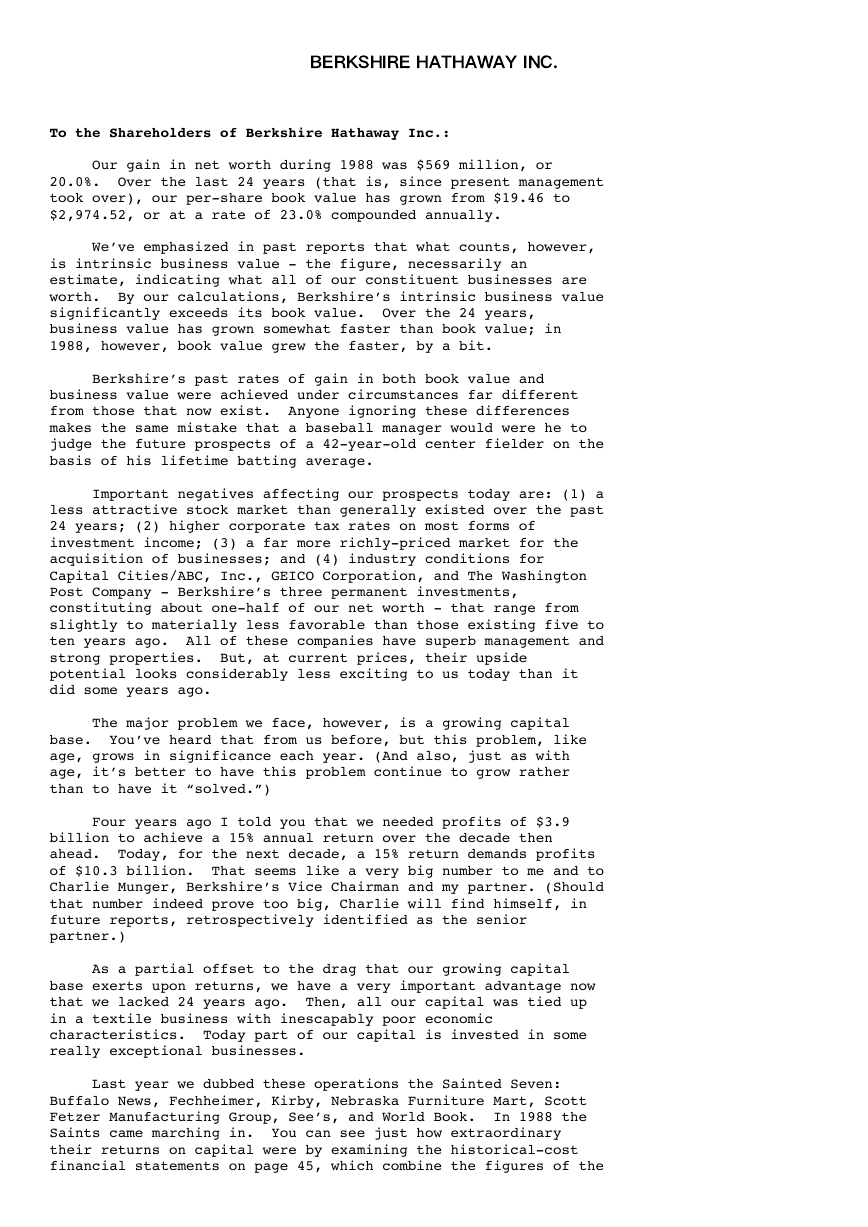
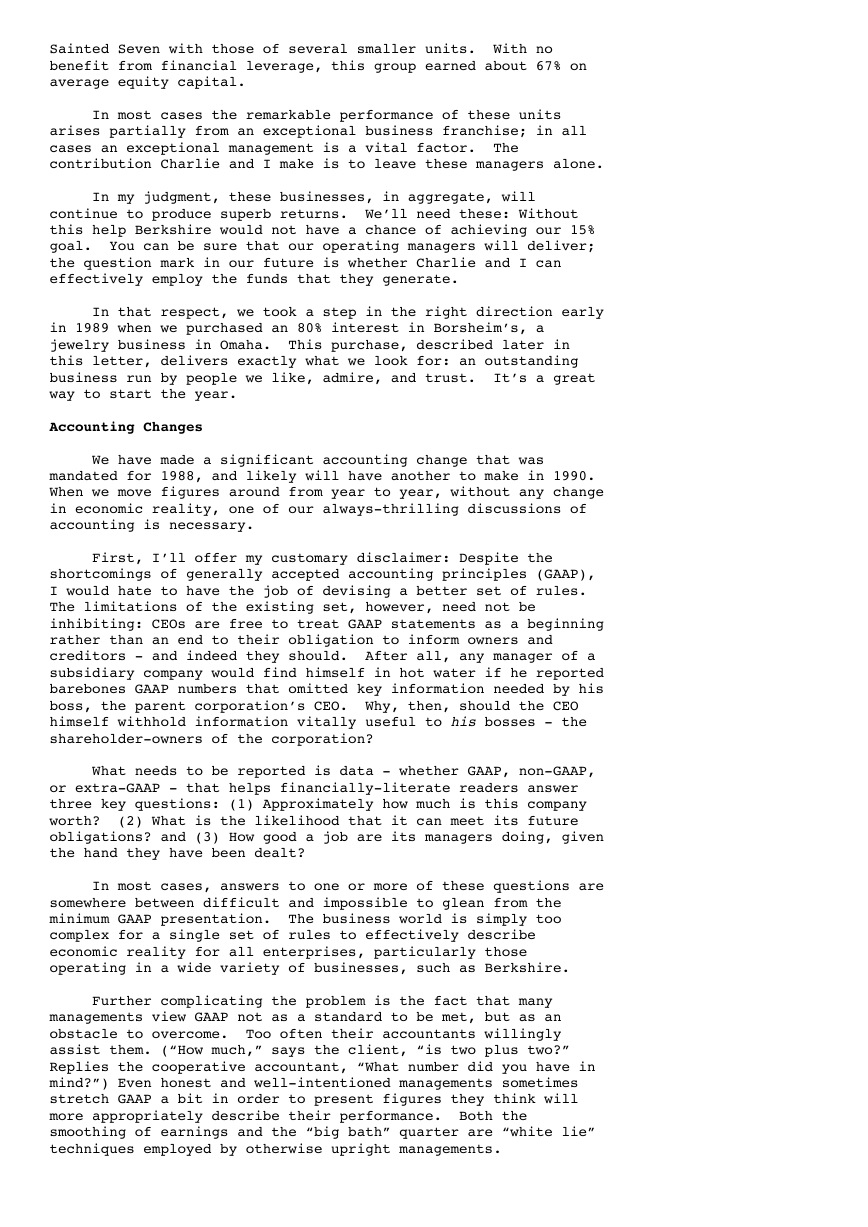

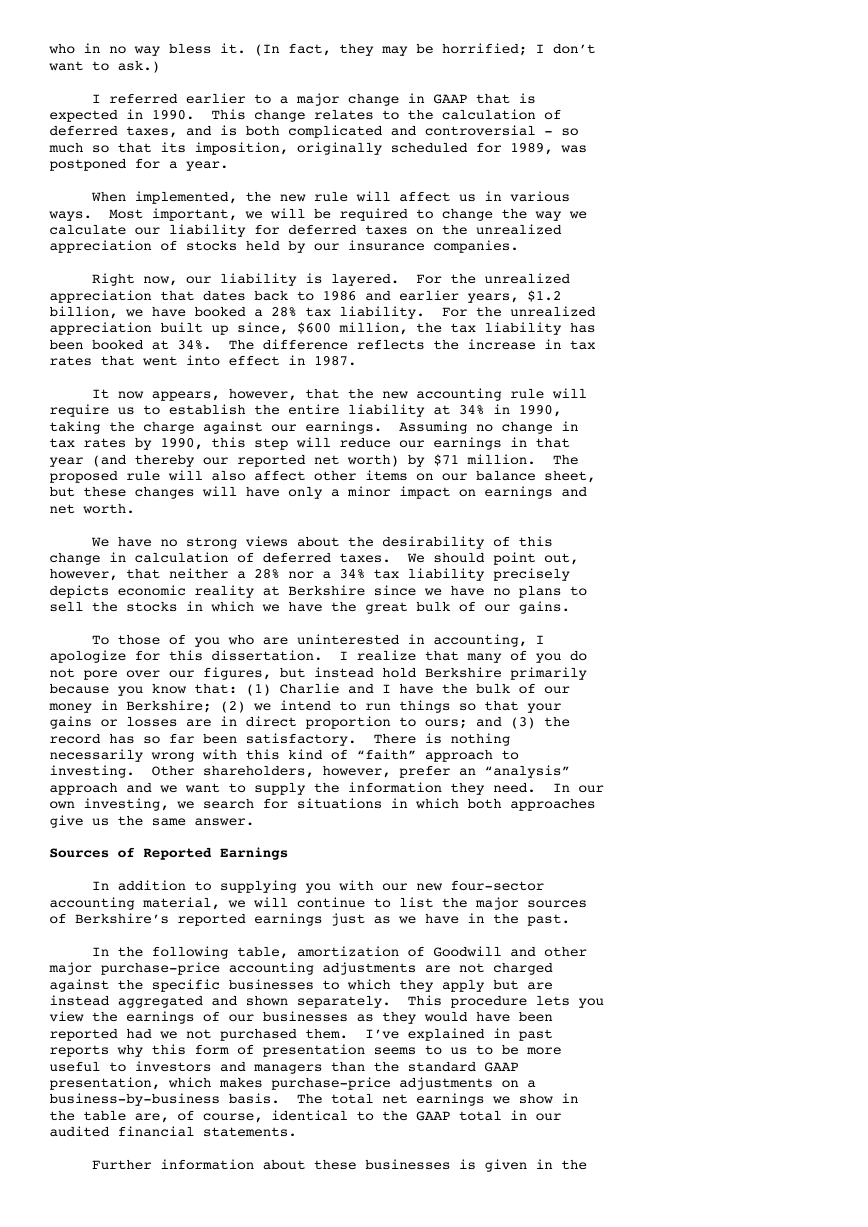

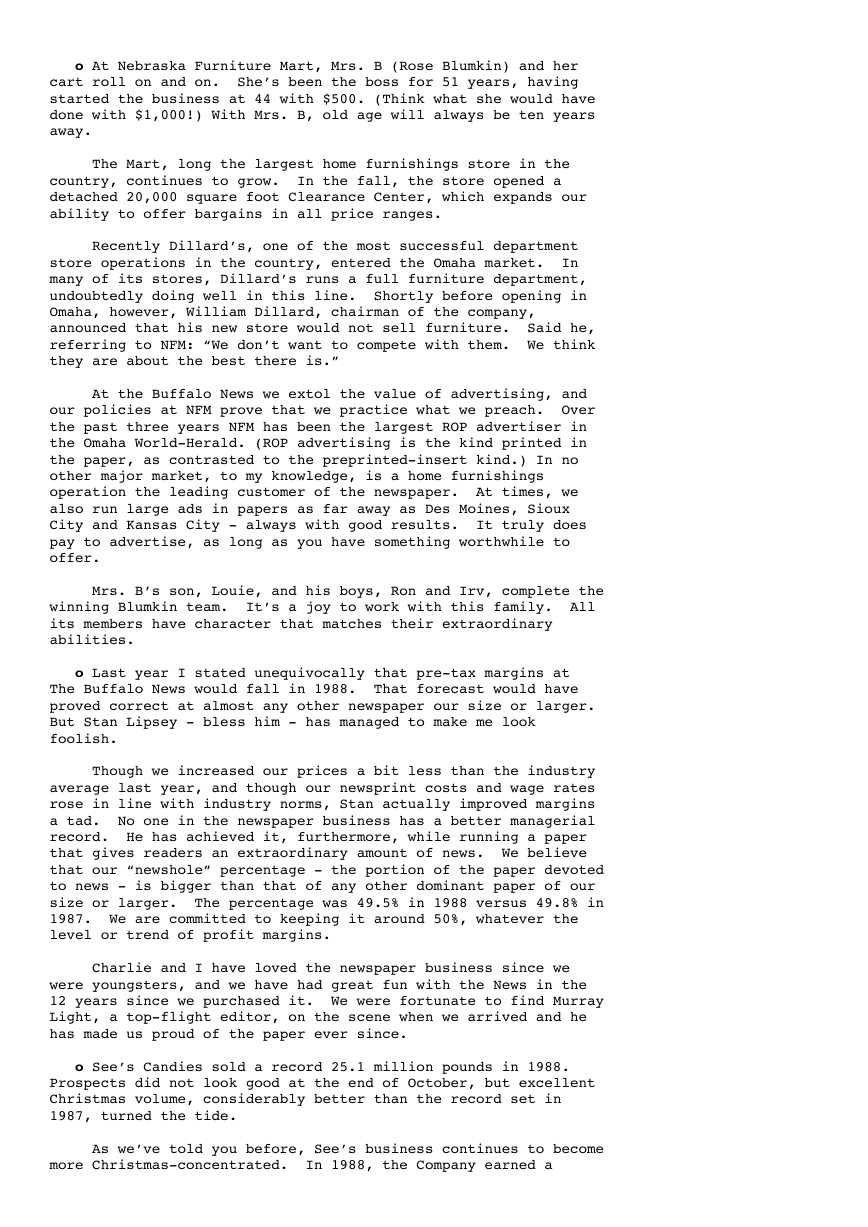
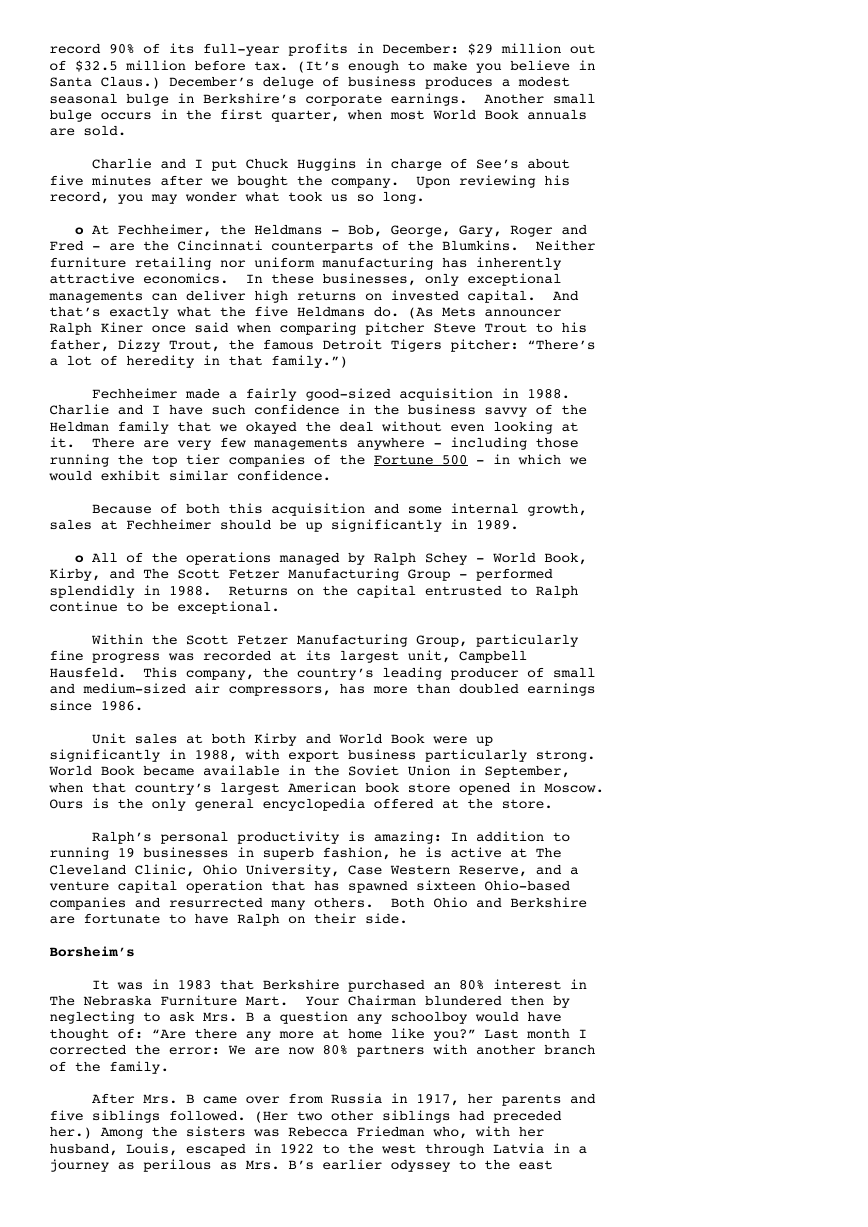
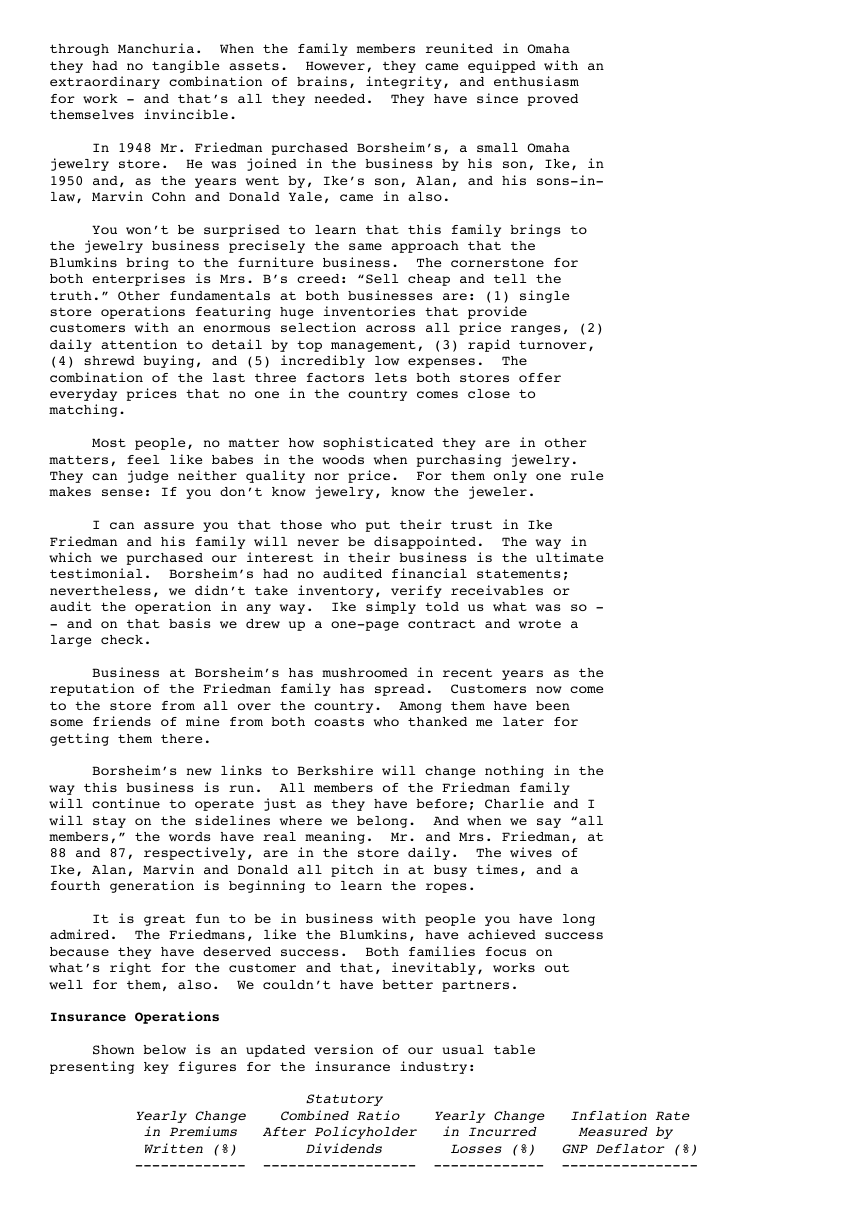








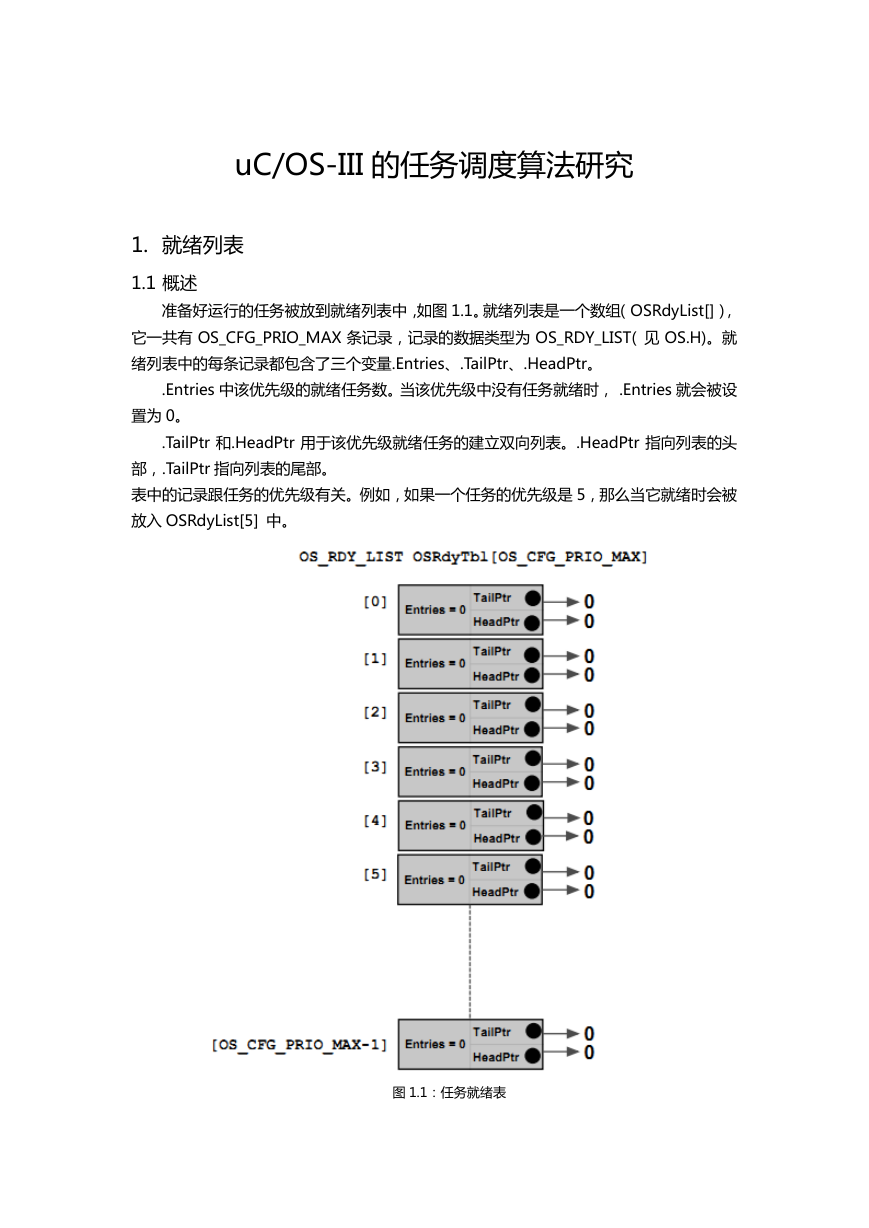 uCOS-III的任务调度算法研究.pdf
uCOS-III的任务调度算法研究.pdf STM32F103x8B_DS_CH_V10(7STM32中文数据手册).pdf
STM32F103x8B_DS_CH_V10(7STM32中文数据手册).pdf FX2N系列PLC培训教程.pdf
FX2N系列PLC培训教程.pdf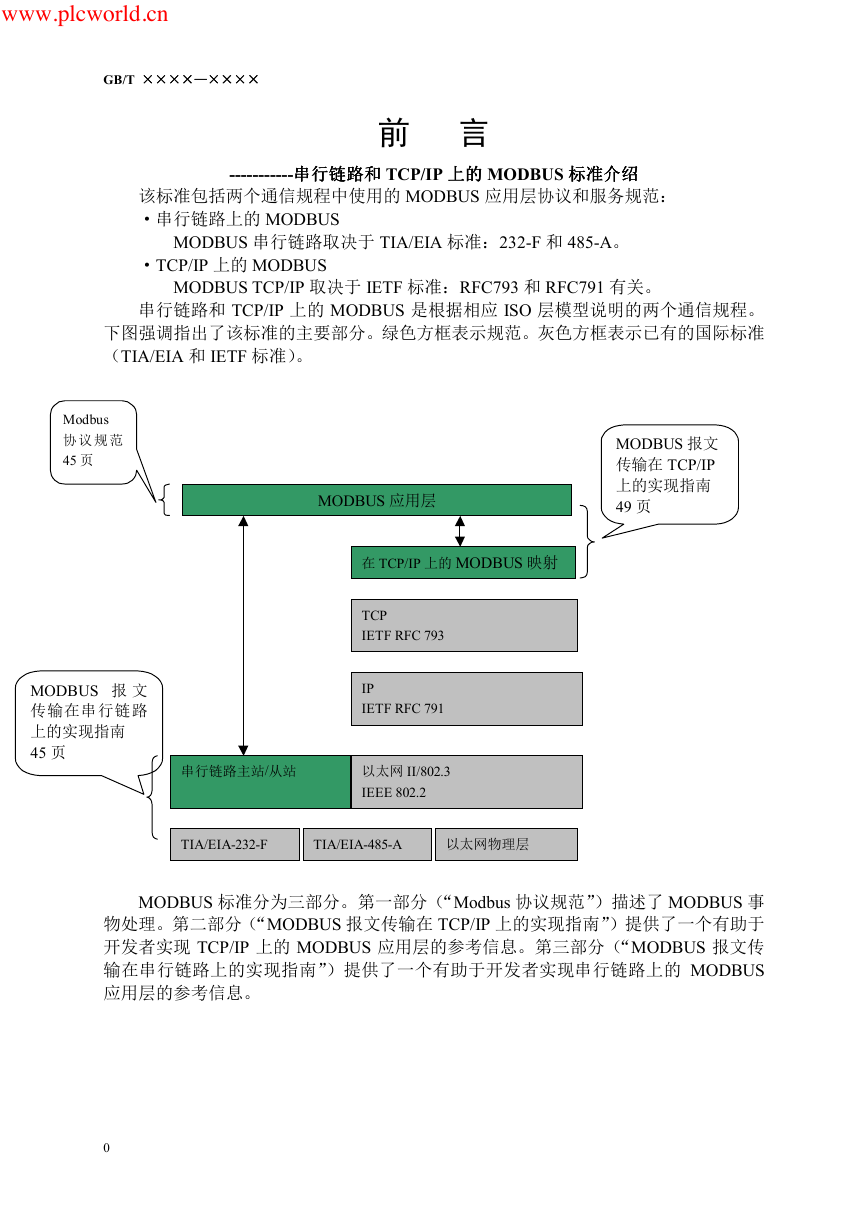 Modbus协议资料.pdf
Modbus协议资料.pdf WM8978中文资料(芯片资料).doc
WM8978中文资料(芯片资料).doc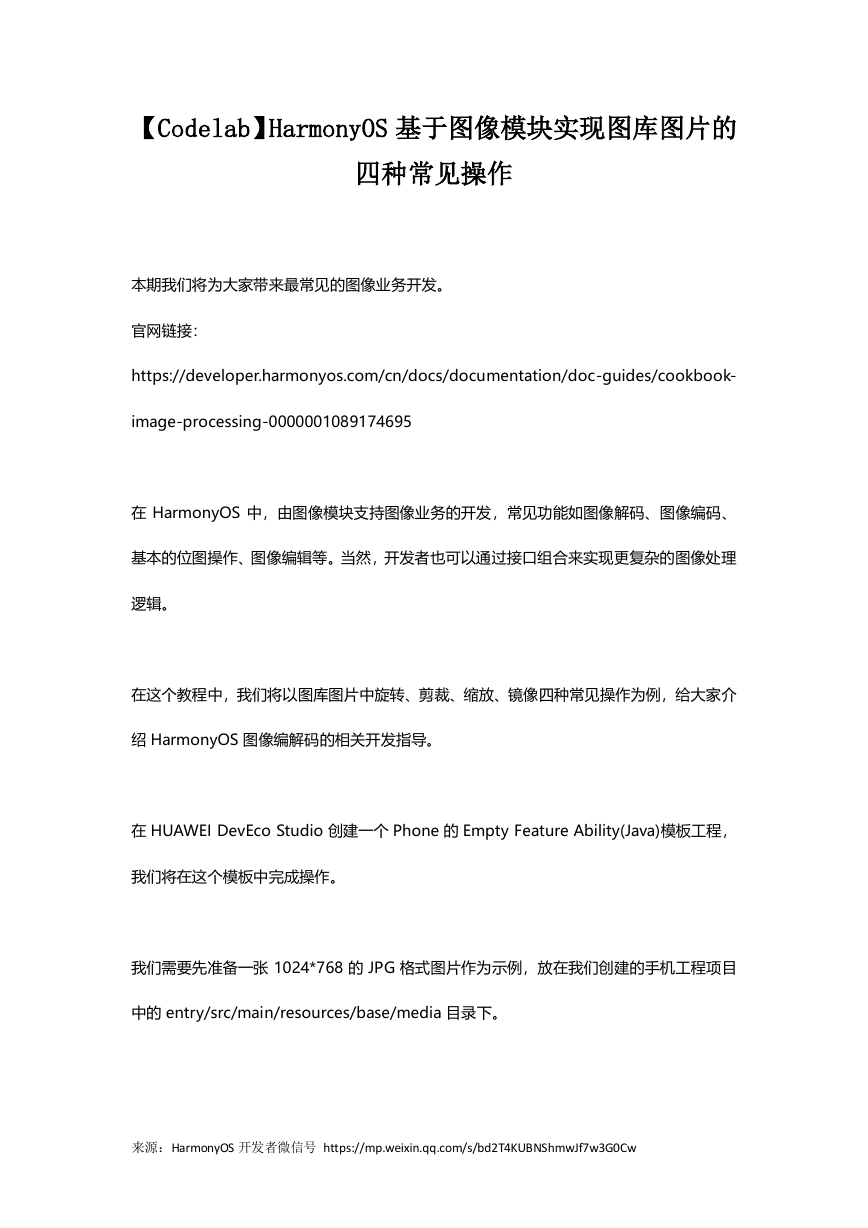 5-1.【Codelab】HarmonyOS基于图像模块实现图库图片的四种常见操作.pdf
5-1.【Codelab】HarmonyOS基于图像模块实现图库图片的四种常见操作.pdf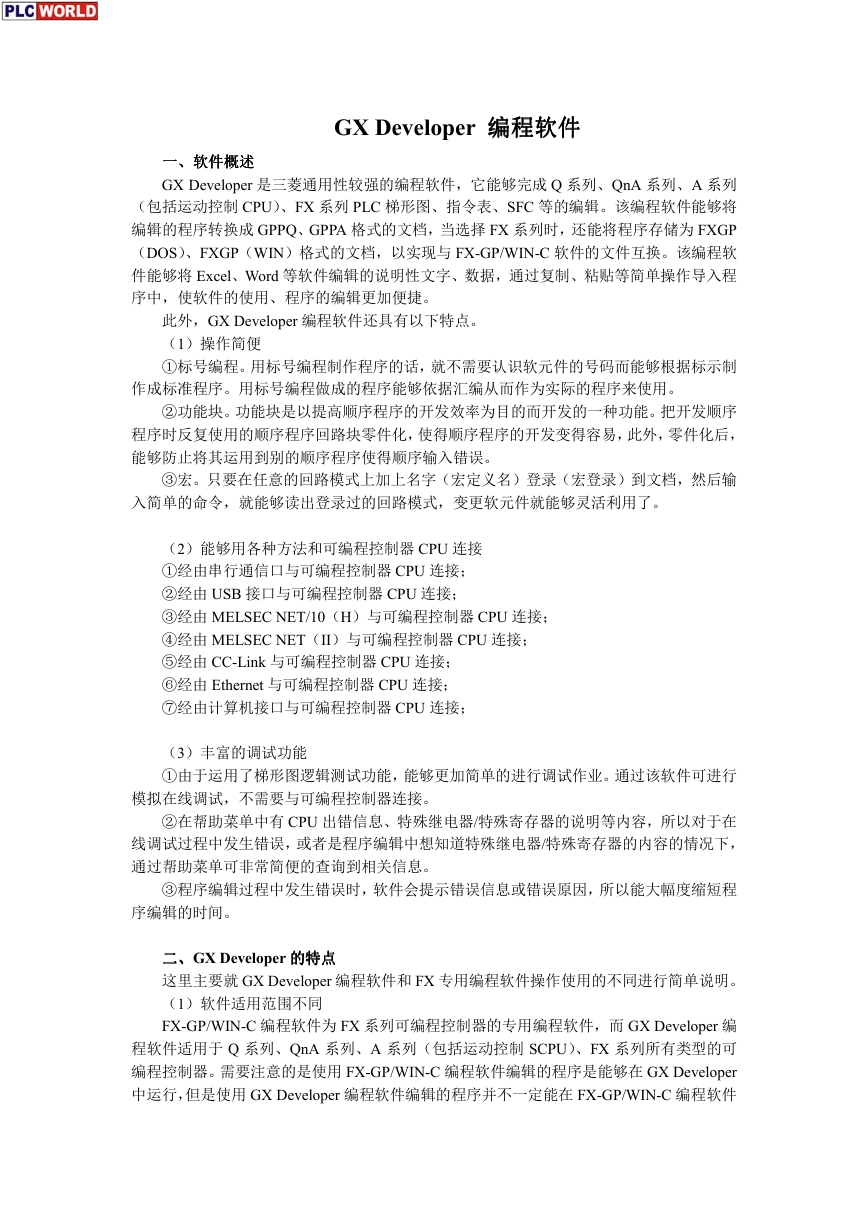 GX Developer 编程软件使用说明.pdf
GX Developer 编程软件使用说明.pdf MR-E伺服与FX3G接线图.pdf
MR-E伺服与FX3G接线图.pdf ATK-NEO-6M GPS模块常见问题汇总_201400721.pdf
ATK-NEO-6M GPS模块常见问题汇总_201400721.pdf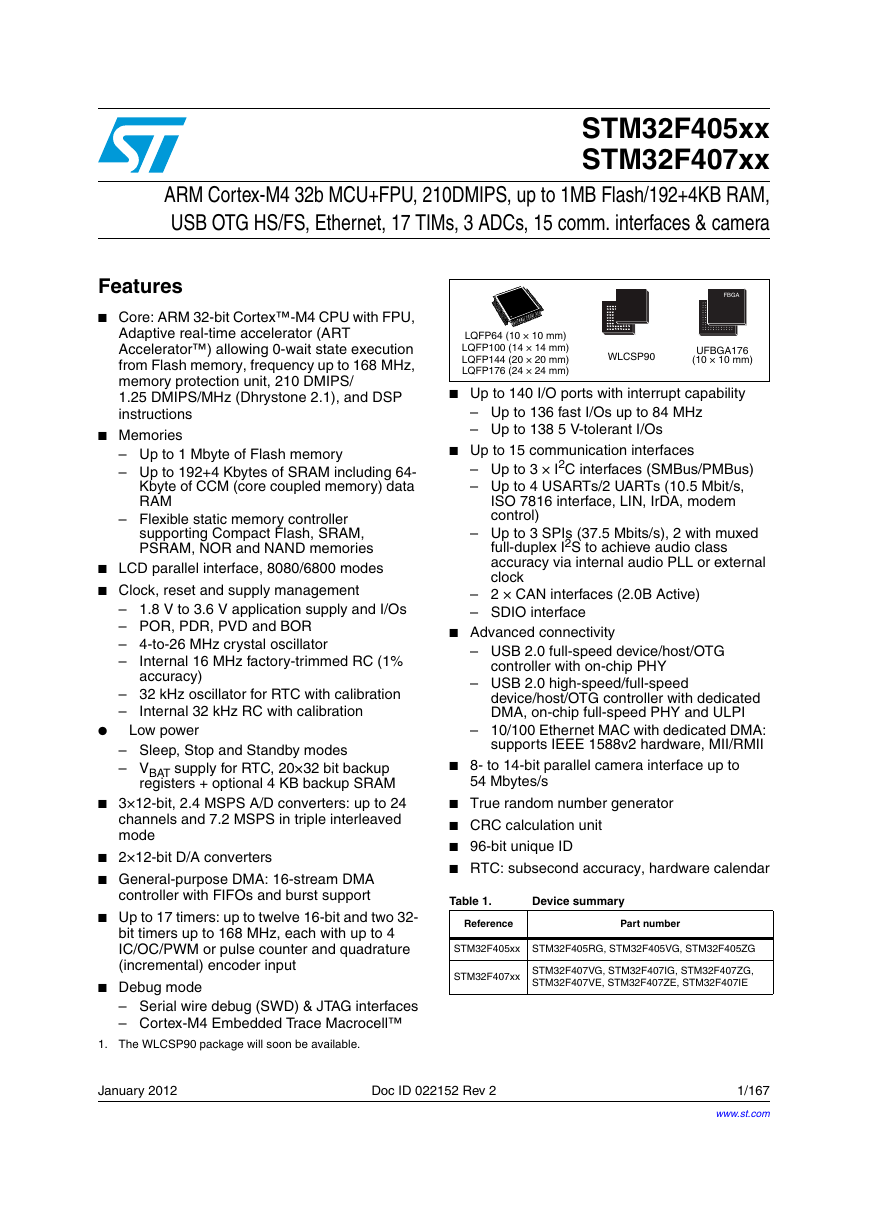 STM32F407ZGT6(芯片资料).pdf
STM32F407ZGT6(芯片资料).pdf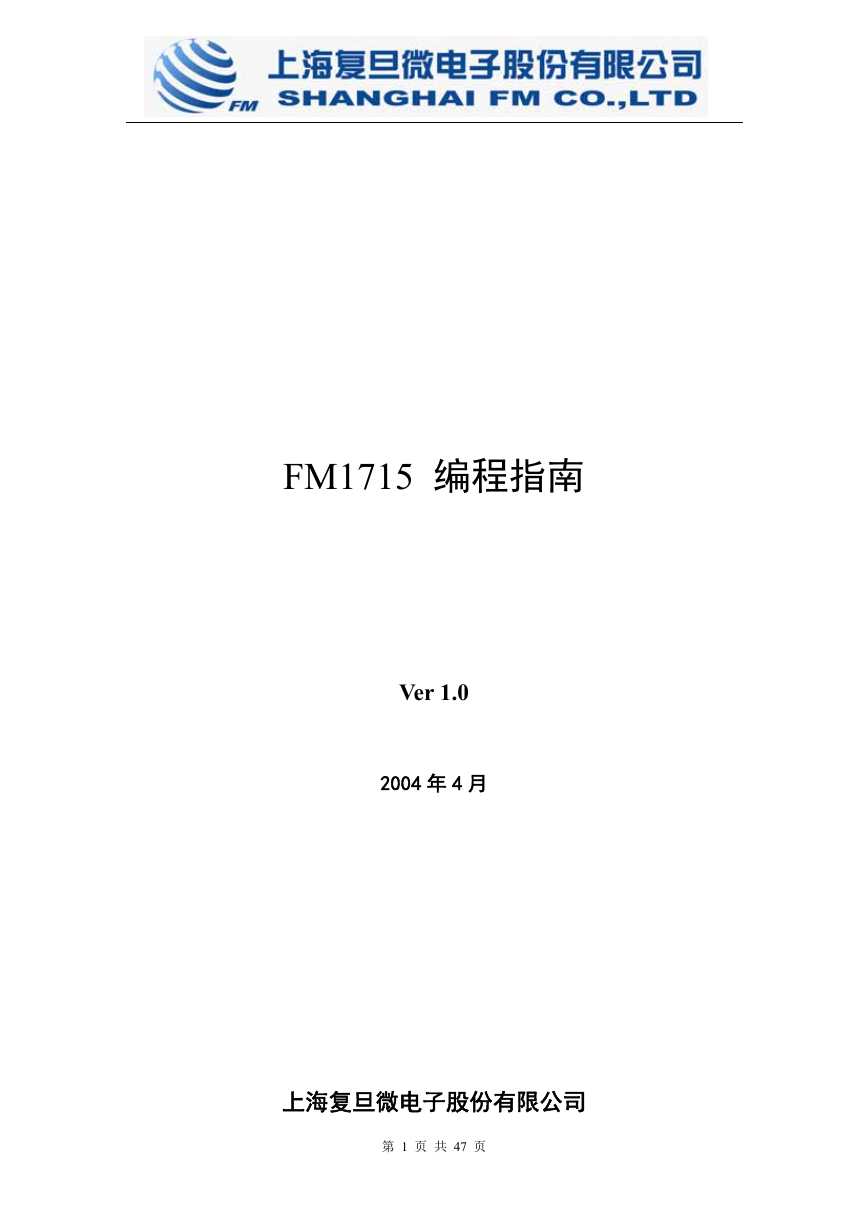 FM1715编程指南.pdf
FM1715编程指南.pdf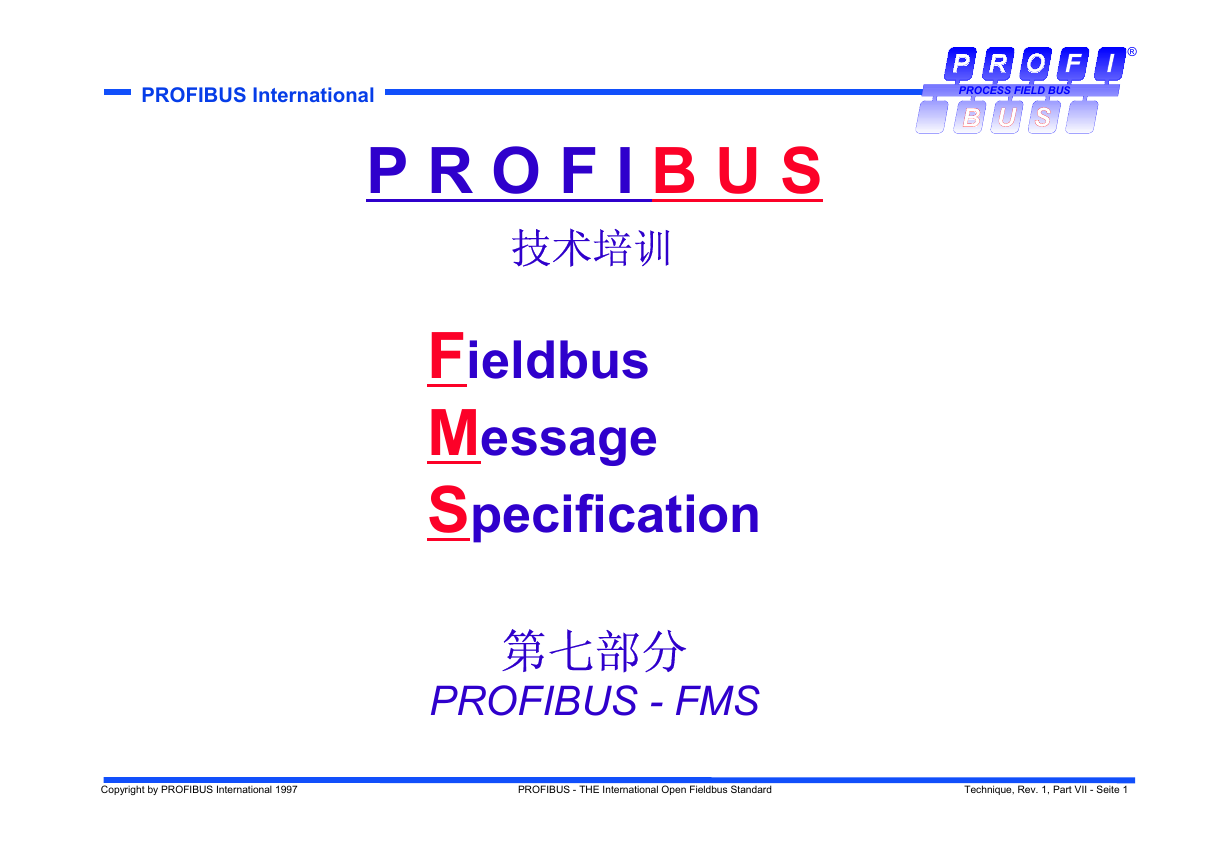 Profibus教程-7.PROFIBUS-FMS.pdf
Profibus教程-7.PROFIBUS-FMS.pdf